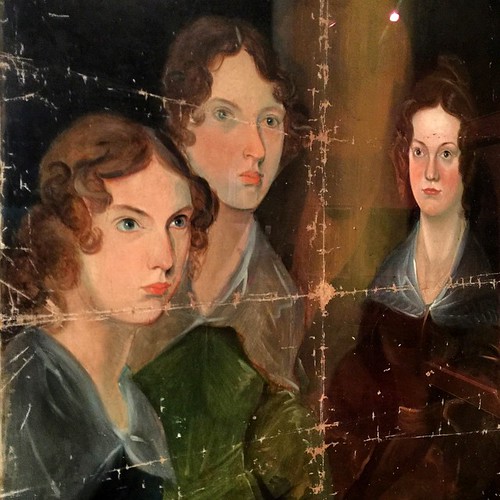
Introduction
The rolling hills of the English countryside, the brooding moors of Yorkshire, and the bustling streets of London have long been sources of inspiration for some of the most beloved literary works in history. The landscapes of Britain are not merely backdrops for stories; they are characters in their own right, shaping narratives and influencing emotions. If you’re a book lover with a thirst for adventure, you’re in for a treat. Let’s embark on a journey through literary landscapes where you can experience the very essence of famous British novels.
The Enchanted Countryside: The Brontë Sisters
When you think of the rugged beauty of the Yorkshire moors, it’s hard not to conjure images from the Brontë sisters’ novels. Both “Wuthering Heights” and “Jane Eyre” were inspired by the wild, windswept landscape surrounding Haworth, where the sisters spent much of their lives.
Visiting Haworth and the Moors
In Haworth, you can visit the Brontë Parsonage Museum, where Charlotte, Emily, and Anne crafted their iconic tales. The museum houses a collection of their manuscripts, letters, and personal belongings that offer a glimpse into their lives. Following your museum visit, lace up your walking boots and explore the moors. The atmospheric scenery is breathtaking, and countless walking trails will take you through the landscapes that inspired Heathcliff and Cathy’s turbulent love story.
Don’t forget to stop by Top Withens, a ruined farmhouse thought to be the inspiration for the Earnshaw home in “Wuthering Heights.” The trek is invigorating, and standing in the midst of the moors will have you feeling just a touch of that Brontë magic.
London: A Literary Melting Pot
Moving on to the capital, London is a bustling metropolis rich in literary history. From Charles Dickens’ “Oliver Twist” to Virginia Woolf’s “Mrs. Dalloway,” the city has long been a muse for writers.
Exploring Iconic Locations
Start your journey at the Charles Dickens Museum, located in a Georgian house where Dickens lived and wrote. Here, you’ll find original manuscripts, personal items, and even a recreation of his study. The nearby streets of Holborn and Covent Garden often pop up in his works, and you can easily imagine the characters weaving through these vibrant areas.
If you’re a fan of the Bloomsbury Group, a visit to the British Museum is a must. Virginia Woolf, E.M. Forster, and other literary figures frequented the Bloomsbury neighborhood, which is home to beautiful squares and charming cafes. Take a leisurely stroll through Gordon Square or Russell Square and soak in the atmosphere that inspired many literary discussions and friendships.
The Lake District: A Poet’s Paradise
The stunning landscapes of the Lake District have enchanted writers for centuries. William Wordsworth and Samuel Taylor Coleridge were inspired by its natural beauty, leading to the birth of the Romantic movement in poetry.
Discovering Wordsworth’s World
A visit to Dove Cottage in Grasmere, where Wordsworth lived, is a must for any poetry aficionado. The cottage is preserved as it was during his time, and the adjoining museum showcases his life and works. From the garden, you can enjoy views of the scenic hills and lakes that inspired “I Wandered Lonely as a Cloud.”
For a truly immersive experience, take a walk around Grasmere Lake or venture up to Rydal Water. The tranquility of the area is palpable, and you might find inspiration striking as you meander through the lush scenery. Don’t forget to visit the nearby Rydal Mount, another home of Wordsworth, where he wrote some of his later poems.
The Scottish Highlands: A Tapestry of Characters
The haunting beauty of the Scottish Highlands has been a source of inspiration for many authors, including Sir Walter Scott and Robert Louis Stevenson. The dramatic landscapes, with their towering mountains and deep, dark lochs, create a backdrop for tales of adventure and romance.
Following in Scott’s Footsteps
To delve into the world of Sir Walter Scott, head to Abbotsford House in the Scottish Borders. This grand estate was designed by Scott himself and is filled with memorabilia from his life and works. The surrounding landscapes, including the nearby River Tweed, are just as captivating and evoke the spirit of his novels.
For fans of Stevenson, a visit to Edinburgh is essential. The city’s Old Town, with its cobbled streets and medieval architecture, inspired much of his work, including “Treasure Island.” Don’t miss out on climbing Arthur’s Seat for stunning panoramic views that will take your breath away, much like the tales spun by Stevenson.
The English Countryside: A Sense of Comfort
The charm of the English countryside can be seen in the works of authors like Jane Austen and Thomas Hardy. Their novels often portray rural life and the social intricacies of their time.
Experiencing Austen in Bath
Bath is a city steeped in Regency charm and is a key location in several of Austen’s novels, including “Northanger Abbey” and “Persuasion.” The Georgian architecture, the Roman baths, and the picturesque streets make for a delightful day of exploration. The Jane Austen Centre offers a glimpse into her life and the era she wrote about.
You can also take a stroll through the Royal Crescent or visit the Assembly Rooms, where the social gatherings of her characters mirrored the real-life events of her time.
Hardy’s Wessex
To experience the landscapes of Thomas Hardy, head to Dorset, where you can explore the fictional Wessex. Hardy’s novels, like “Tess of the d’Urbervilles” and “Jude the Obscure,” are deeply rooted in the countryside. Visit the picturesque village of Dorchester, where Hardy was born, and explore the Thomas Hardy’s Cottage, a lovely cob and thatch building.
The surrounding countryside is stunning, dotted with rolling hills and ancient stone structures. Take the time to walk the trails that inspired Hardy’s poetic descriptions of rural life, and perhaps even stop by Max Gate, the house he designed himself.
Conclusion
The literary landscapes of Britain are a treasure trove of inspiration, history, and adventure. Whether you find yourself wandering the moors of Yorkshire, strolling through the streets of London, or basking in the serene beauty of the Lake District, each location offers a unique connection to the authors who brought these settings to life.
So, grab your walking shoes, pack your favorite novels, and set off on a literary pilgrimage through the enchanting landscapes that continue to inspire readers and writers alike. Each stop on your journey holds its own magic, and who knows? You might just find your own story waiting to be written amidst the rich tapestry of British literature.



